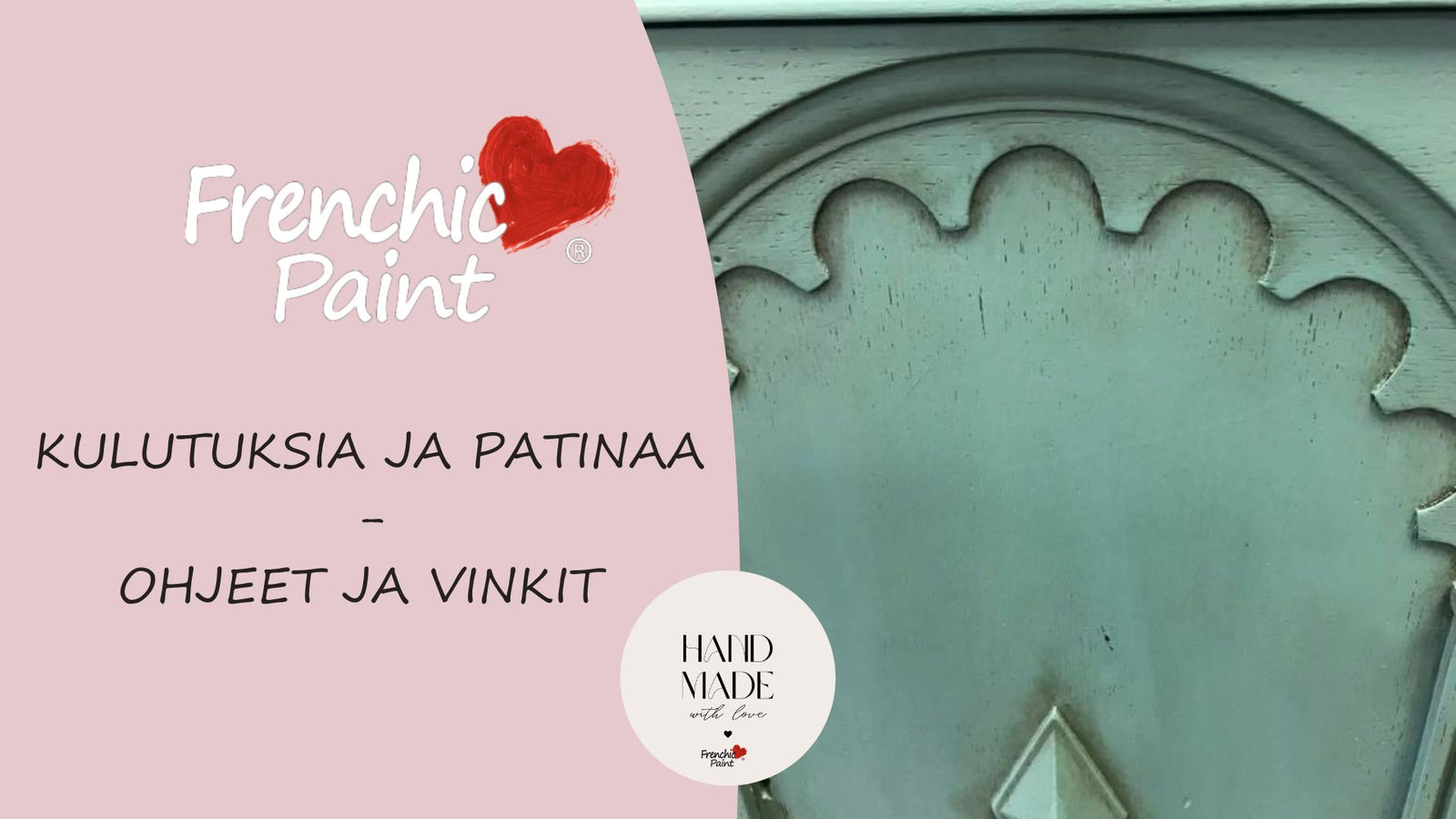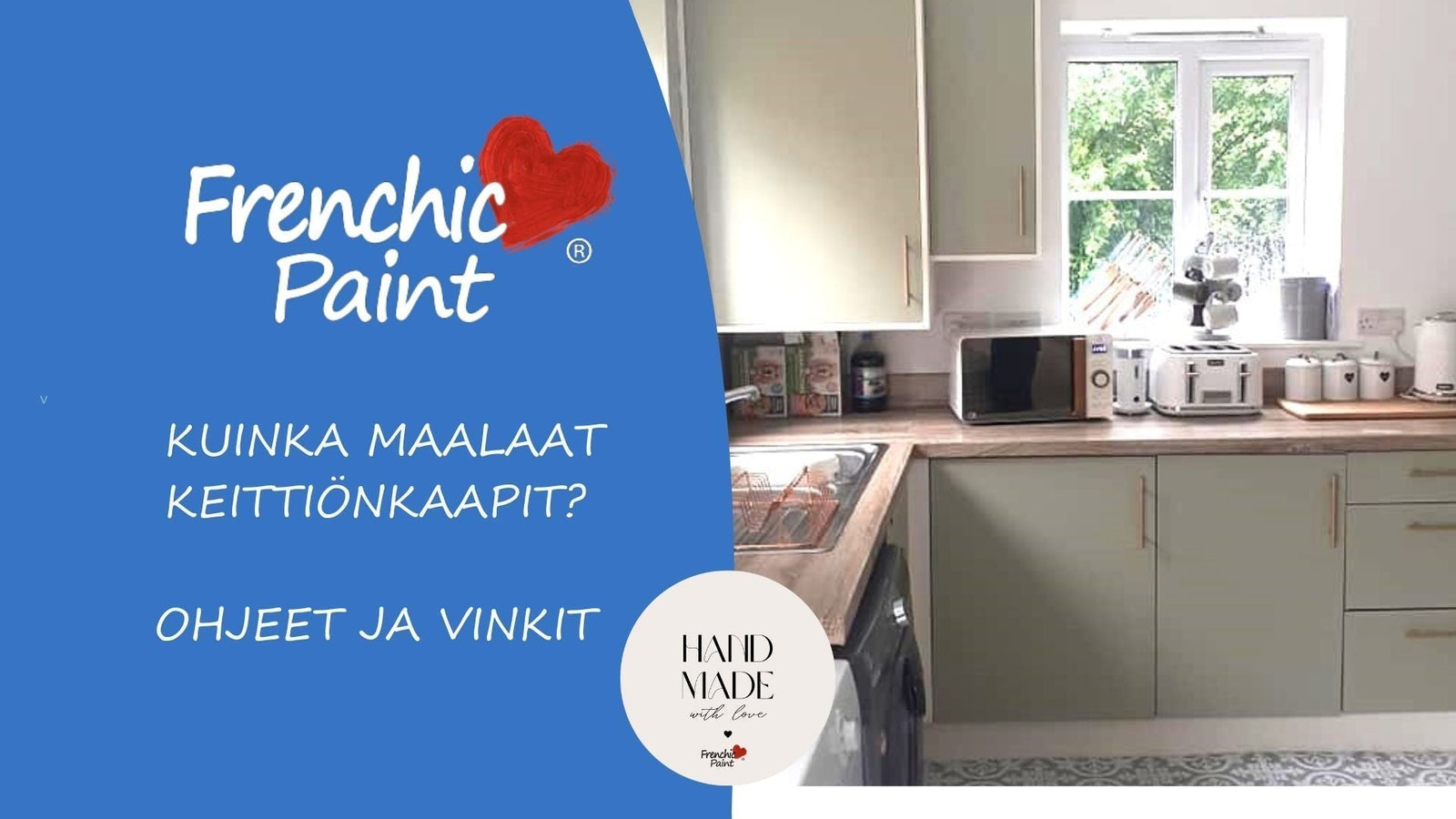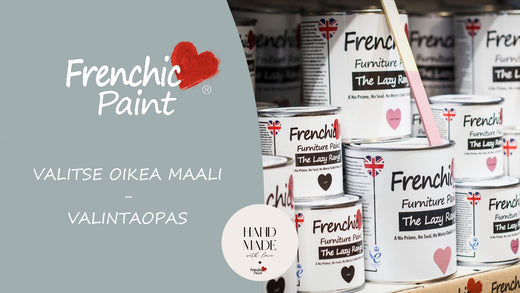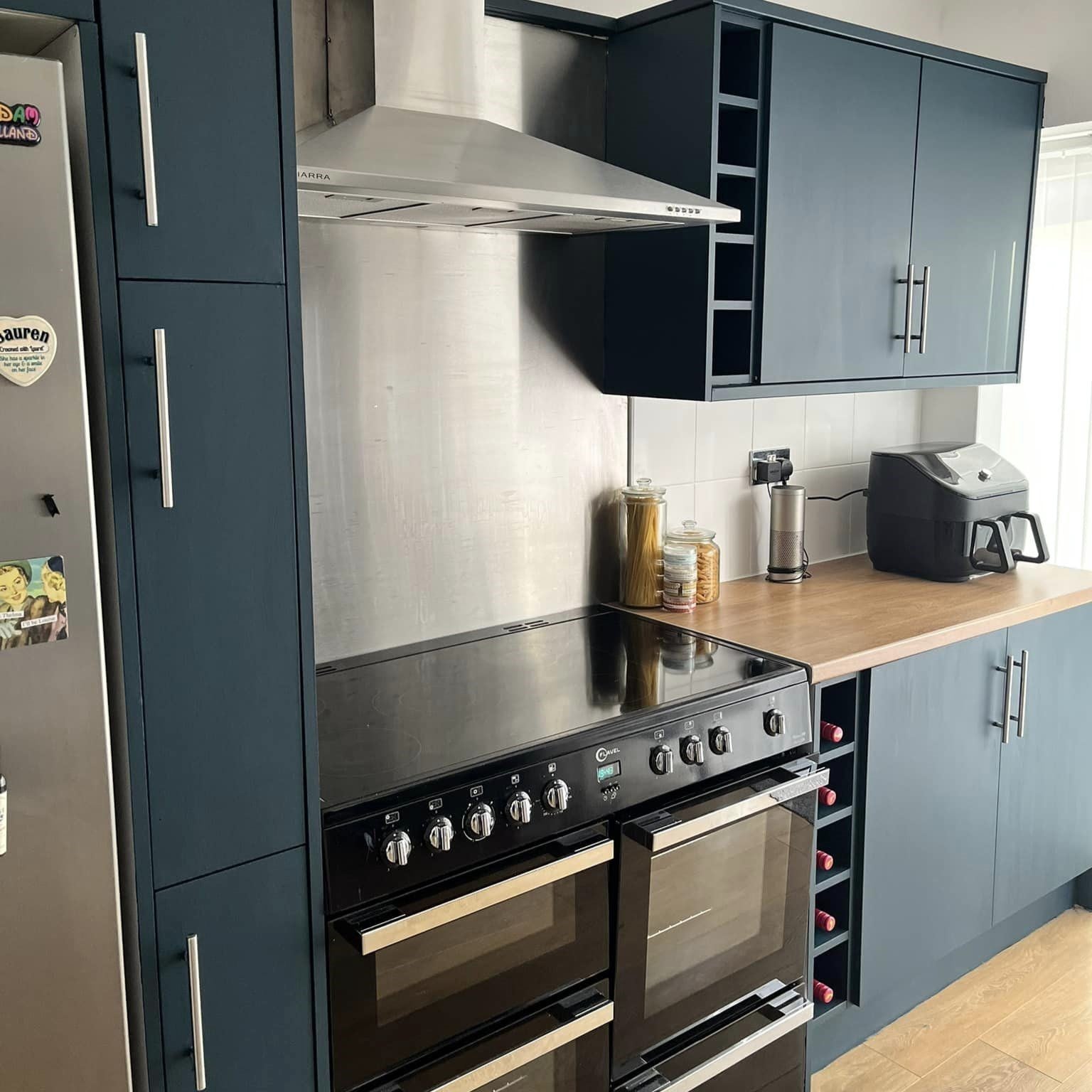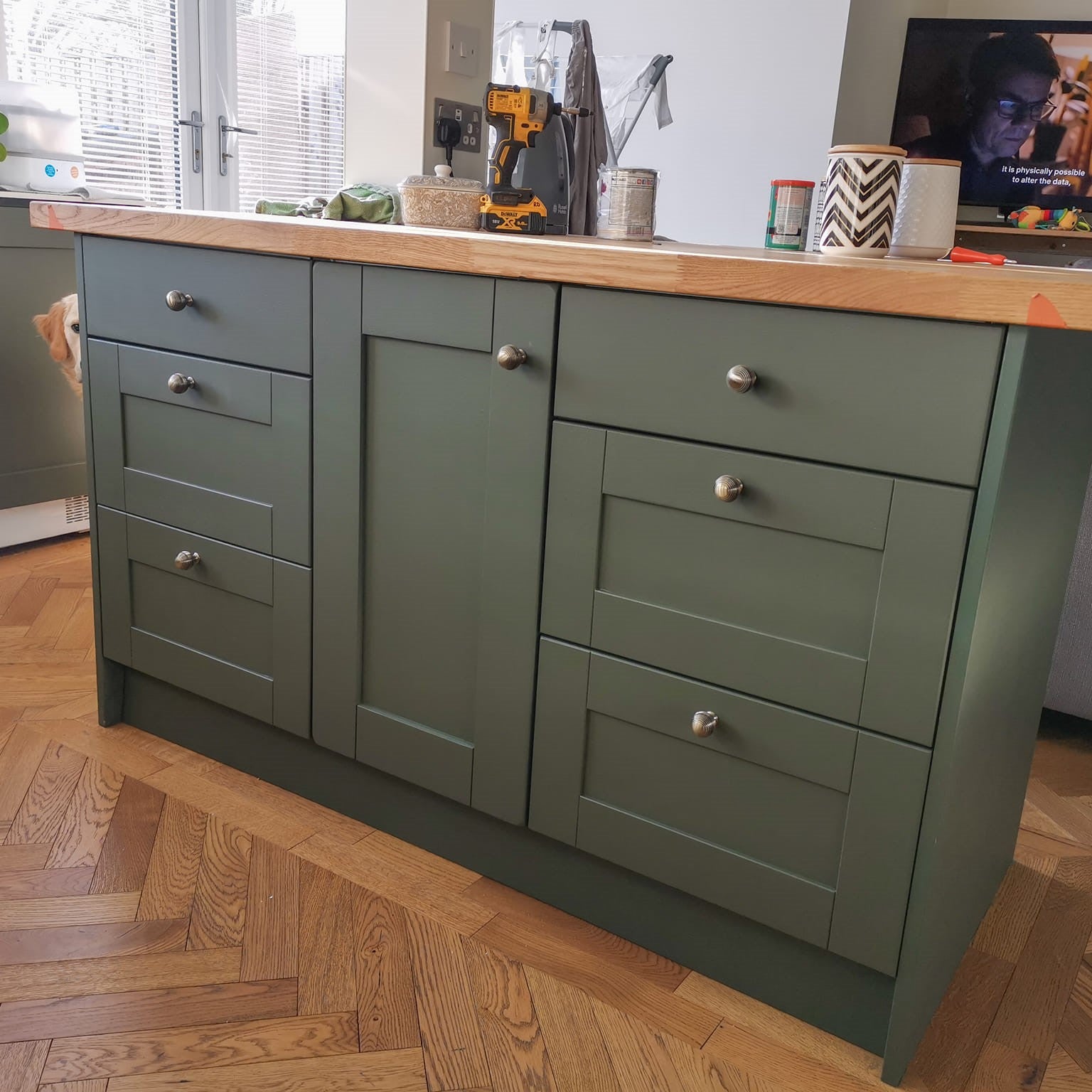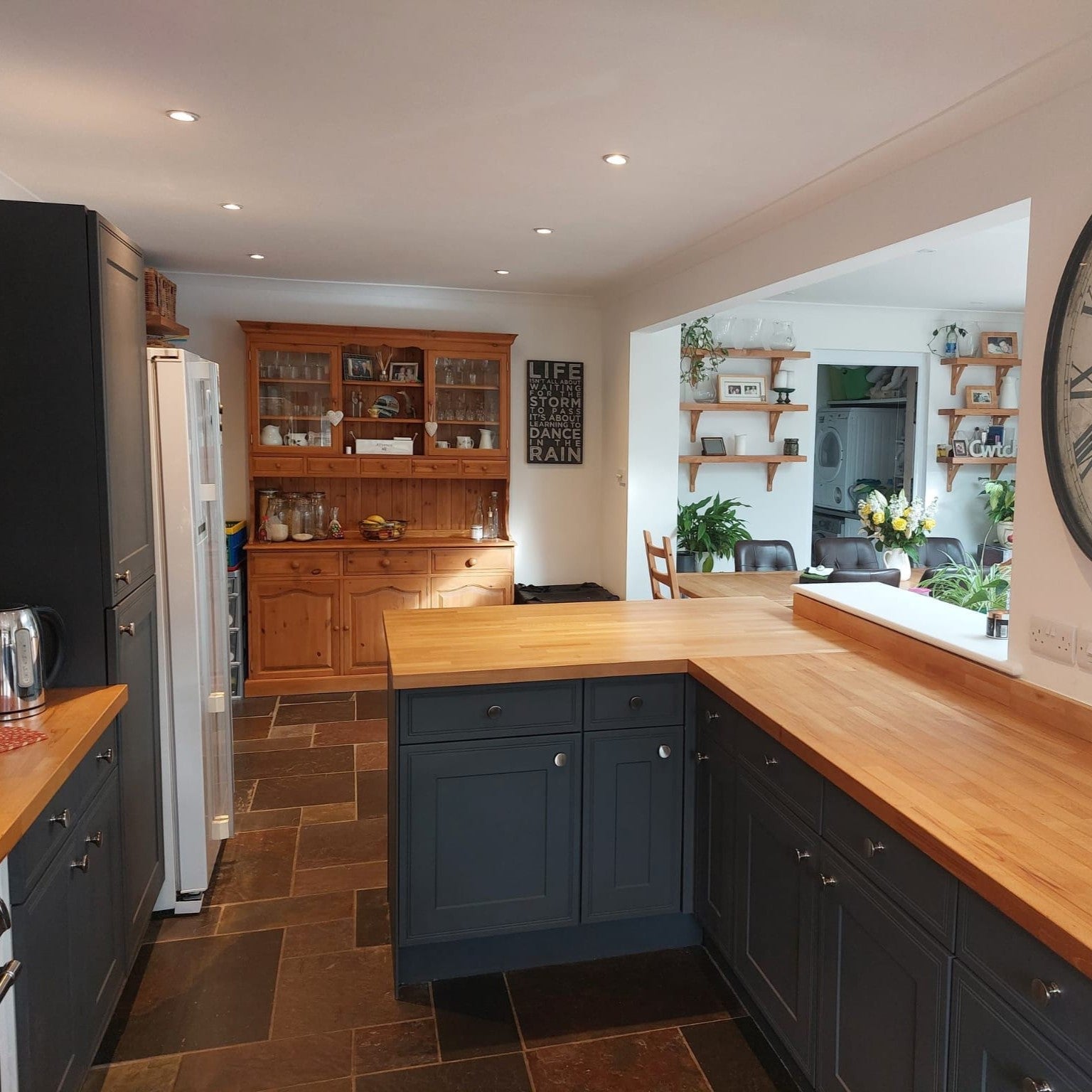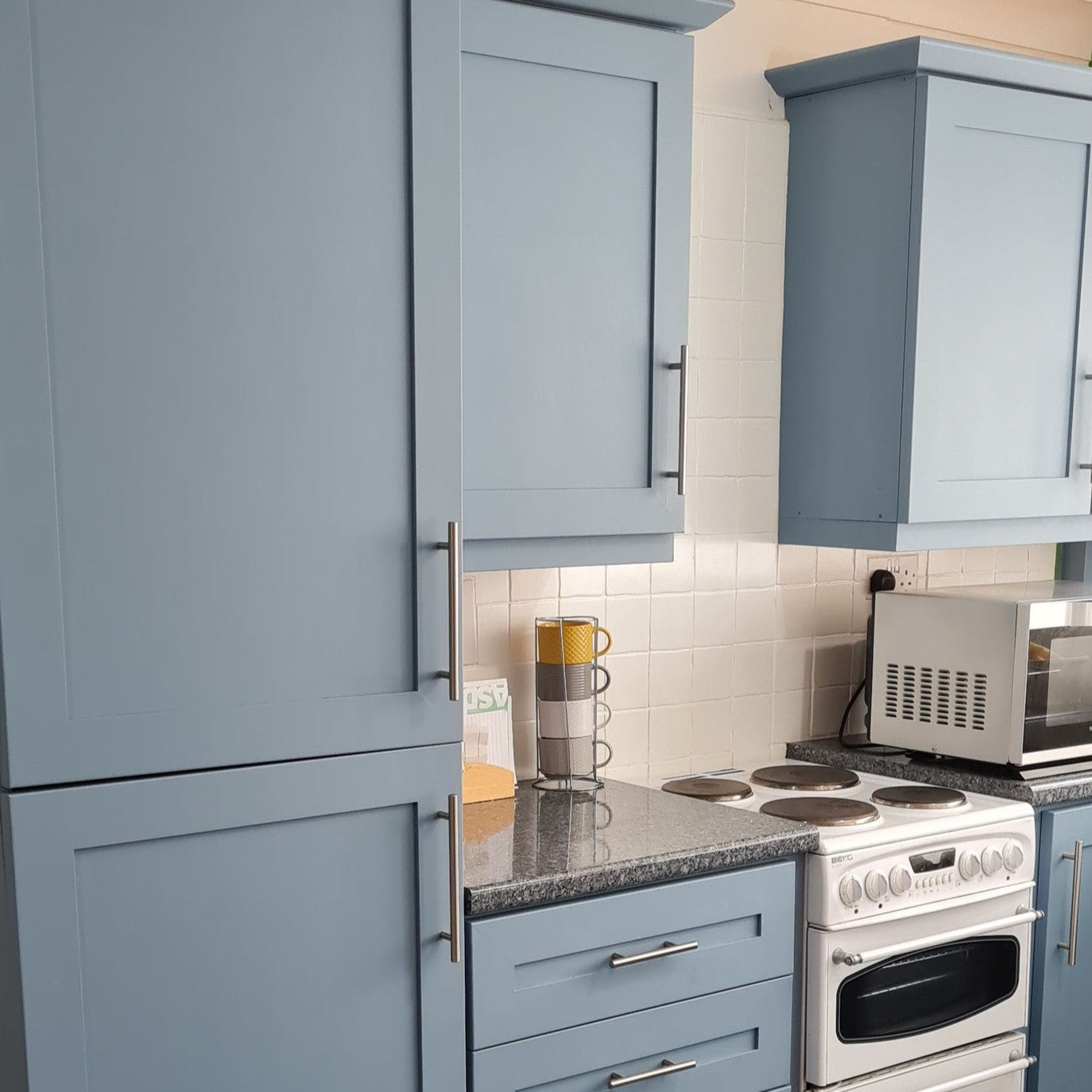ABC - LEARN TO MAKE WEAR AND PATINA IN FURNITURE PAINTING
Would you like your furniture to look old, beautifully aged - like antique furniture without the antique furniture price tag?
This style works best with chalk paint!

You can create a worn and patinated look for all furniture - just choose which piece of furniture to start with in your home.
You need chalk paint, a sanding sponge or sandpaper and a free afternoon.
Different painting techniques are fun to implement!
The easiest and most straightforward way is to sand the paint off the corners and edges.
There are other ways to give the furniture a patinated 'Shabby Chic' look, such as dry brushing or the candle technique.
Read on this Frenchic blog how easily and fun you can make an old and worn-looking paint surface for your beautiful furniture yourself.

The dresser in the picture is painted with two shades: green Apple of My Eye and white Wedding Cake shade.
Lots of wear and brown and clear Frenchic wax. You can learn more about the use of waxes in this blog.
Gather supplies - at least you need these:
-
Protective cloths or fabric
-
Sandpaper or sanding sponge
-
A paintbrush
-
Paint
-
Microfiber cloth
-
Steel wool
-
Furniture wax
-
A candle stub
How are expenses for furniture made?
1. Preparation
Start by spreading cloths or fabric under the furniture in the work area. Remove the hinges, pulls and handles from the furniture - store them carefully in the box. Bring out the supplies needed for painting the furniture.
2. Clean and sand the furniture
Prepare the furniture. If necessary, wipe the furniture with Sugar Soap detergent, rinse and dry. Lightly sand all loose and flaking paint and sharp corners.
When sanding, use varying force in different places on the surface - this helps the paint to absorb unevenly and it adds to the old, patinated look .
At the same time, go through the rest of the sharp corners and edges, round them off nicely by sanding them - even old furniture would have them.
When you're done, wipe off the sanding dust with a damp microfiber cloth.
3. Paint
Now you can start painting! There are many different ways you can use and combine to create a vintage look.
When you use lime paint, you can choose a floor tile according to the grain of the wood, with a bold 'here-there' style or figure-of-eight brush movements.
Remember, you're doing a worn, vintage look, not a perfect surface.
After the first coat has dried, decide if you want the paint to be randomly painted or if you want a more opaque paint finish with the next coat.
Now try different techniques on the surface or combine them!
Reveal the layers
If you want the furniture to look like it has been painted several times, get two different shades. The first tone layer can thus be seen from worn areas under the top layer of paint.

The funniest result comes when your shades are strongly different from each other, for example contrasting colors. If you want the wooden surface of the furniture to be visible under the paint, one shade is enough for this technique.
Dry Brush technique
'Dry Brush', painting with a dry brush: you can use this technique to emphasize edges and corners or paint over completely.
In this technique, the paint brush has only a little paint, and no covering surface is sought.
Try a white or gray shade with the 'Dry Brush' technique on top of a dark shade - you'll get a wonderful gauzy surface.

Candle technique
Rub the candle on the furniture in places where you don't want paint.
Especially for corners and edges. Paint the furniture and you will notice that the paint does not stick to the areas treated with the candle.
Wipe off the paint from them with a damp cloth. Try this technique on dark, unpainted wood furniture - combine light paint.
Abrade the surface and edges with steel wool or sandpaper
When the painted furniture is dry, you can start making wears using steel wool or sandpaper - or both, depending on how strong the wear marks you want.
If you painted two coats, try steel wool and sand the paint surface to reveal the wood surface.
Try using steel wool in circular sanding motions and longitudinally along the edges.
Use varying amounts of force to get beautiful, natural-looking areas.
Use the points that would otherwise be used. corners, edges, drawer fronts, reliefs and other areas with heavy wear, such as the areas of knobs and pulls.

Start sanding lightly and continue until you are happy with the look. Finally, wipe the sanding dust off the surfaces.
Waxing
When your furniture is painted, dry and the wear is done, add furniture wax with a wax brush.
Use the wax liberally and remember to always wipe off the excess wax.
The purpose of the wax is to absorb into the worn spots on the wood surface . Thin layers of wax look beautiful.
Brown Frenchic wax on top of the paint adds a worn look and 'ages' the surface beautifully. You can also add patina to the paint surface with other colored waxes.
Do you like cracked paint?
You can easily make one yourself on new or old furniture with the Easy Crackle cracker from the Frenchic series.
Crackling agent is added between two layers of paint - and the top layer of paint cracks and reveals the color of the lower layer of paint.
You can use two different shades or the same shade in layers.
With Easy Crackle, even brand new furniture can be given an antique look, and the cracked paint surface resembles an old cracked oil paint surface - you can also apply the same surface to other objects: mirror or picture frames, chests, etc.

Tip: if you like the Shabby Chic style and light furniture, try a crackling agent between two coats of white paint.
The result is then a sophisticated cracked look, to which you can add patina by finishing the surface with brown or gray wax, which will further emphasize the cracks.
Frenchic waxes are wonderful, beeswax based and flexible to use. Read more about the use of waxes in this Blog.

Image: try different tools to create a worn look: dab with a sponge, make layers - sand and wax.
What kind of paint should be used for the consumption?
You can use any paint and wear it out when painting furniture, but one paint stands out above all others - chalk paint.
It's thicker than regular furniture paints, so you don't need a lot of it on the brush (this is an advantage in chalk painting brush techniques).
In addition, chalk paint lacks the plastic-like, thick surface that you often see in furniture painted with latex paint, when the paint has accumulated on the edges of the furniture and the drawers or doors in the furniture no longer close properly after painting.
Lazy Range
If you are using chalk paint for the first time, our Lazy Range shades are ideal when you end up trying these techniques.
The shades of the Lazy Range series are self-leveling and do not need to be primed or protected separately - and your free afternoon immediately became easier!



